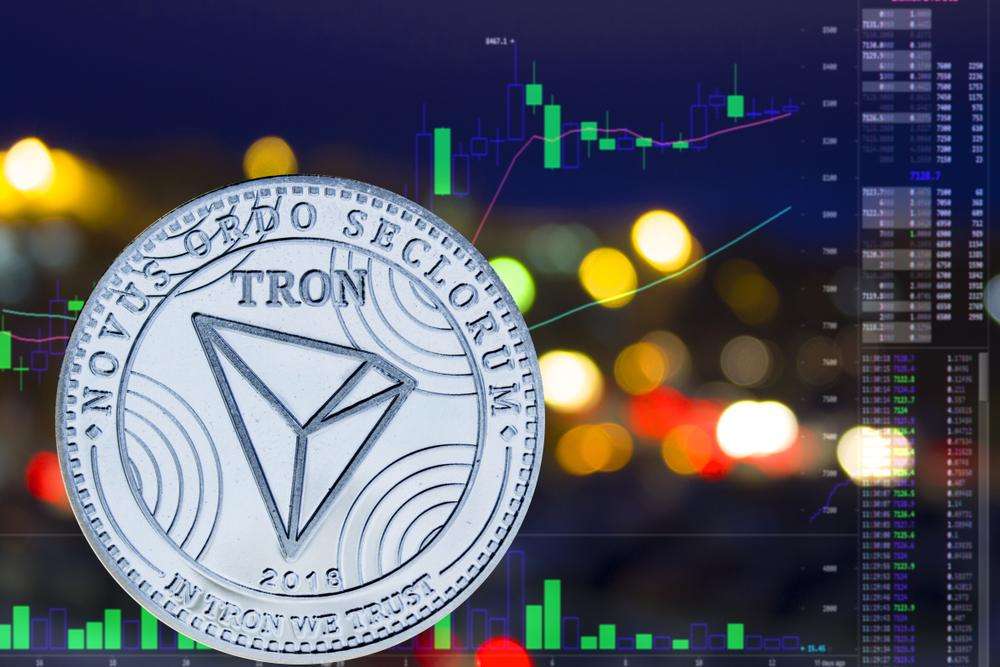- Tron’s lower transaction fees and efficiency make it a preferred choice for stablecoin liquidity and microtransactions.
- TRX’s December all-time high signals strong growth, while Ethereum’s market cap provides long-term stability.
For years, Ethereum has dominated the blockchain space, setting the standard for decentralized applications, smart contracts, and financial infrastructure.
However, Tron has emerged as a serious competitor, particularly in stablecoin transfers, where it has surpassed Ethereum in volume.
Recent data highlights that USDT transfers on Tron have reached an impressive $22 billion, vastly outperforming Ethereum’s $2.6 billion in stablecoin movement.
Why Tron’s Low-Cost Model Gives It an Edge
One of the key factors behind Tron’s success in stablecoin transactions is its focus on cost efficiency and accessibility.
Unlike Ethereum, which has faced high gas fees and network congestion, Tron has optimized its infrastructure for faster, lower-cost transactions, making it an attractive choice for stablecoin users and high-frequency transfers.
By keeping costs minimal, Tron has positioned itself as the go-to blockchain for stablecoin liquidity, allowing users to transact USDT and other stable assets with ease.
Ethereum’s DeFi Dominance Still Holds Strong
Despite Tron’s rapid growth, Ethereum remains the undisputed leader in decentralized finance (DeFi). With a well-established ecosystem of smart contracts, lending platforms, and yield farming protocols, Ethereum continues to drive high-value transactions and institutional adoption.
Currently, Ethereum holds 46.07% of the USDT stablecoin market share, while Tron closely follows with 42.29%, signaling a fierce battle for market control.
Beyond stablecoins, Ethereum leads in active wallet adoption, recently surpassing 126 million addresses with a balance, compared to Tron’s 122 million.
The small margin underscores Tron’s fast-growing user base, though Ethereum’s first-mover advantage and DeFi infrastructure remain key strengths.
Which Blockchain Has More Long-Term Growth Potential?
Ethereum boasts a massive $394 billion market cap, dwarfing Tron’s $21 billion valuation. However, Tron’s ability to attract high transaction volumes and increase its user base has made it one of the fastest-growing blockchain networks.
TRX’s all-time high in December demonstrated its strong upward momentum, while ETH’s performance has lagged in comparison.
Ethereum’s lower circulating supply suggests a higher potential for long-term price appreciation, yet Tron’s smaller market cap and rapid adoption rate make it a compelling choice for investors looking for growth opportunities in blockchain sectors.
TRON (TRX) is currently trading at $0.2414, reflecting a 1.25% increase in the last 24 hours. Its market capitalization stands at $20.8 billion, with a 24-hour trading volume of $433.88 million, marking a 48.74% increase. The circulating supply is 86.17 billion TRX, with no fixed maximum supply.
TRON Network Growth and Market Trends
TRON continues to solidify its position in the stablecoin and DeFi sectors, processing $5.46 trillion in USDT transactions in 2024, surpassing Ethereum in total revenue generation.
Currently, 83% of all Tether (USDT) transactions occur on the TRC-20 network, highlighting its dominance in stablecoin liquidity. Additionally, TRON has formed a $1 billion chain swap partnership, enhancing cross-chain liquidity and DeFi growth.
Another major milestone is TRON’s 115.73% revenue increase, reaching $2.12 billion, primarily fueled by DeFi advancements and increased stablecoin usage. The network is also expanding its AI-driven solutions, focusing on secure, autonomous data management to improve scalability and efficiency.

From a technical perspective, TRX faces resistance at $0.25 – $0.27, while strong support lies at $0.23 – $0.24. If TRX breaks above $0.25, it could push toward $0.30, whereas a failure to hold support may lead to a pullback to $0.22 before another upward attempt.











